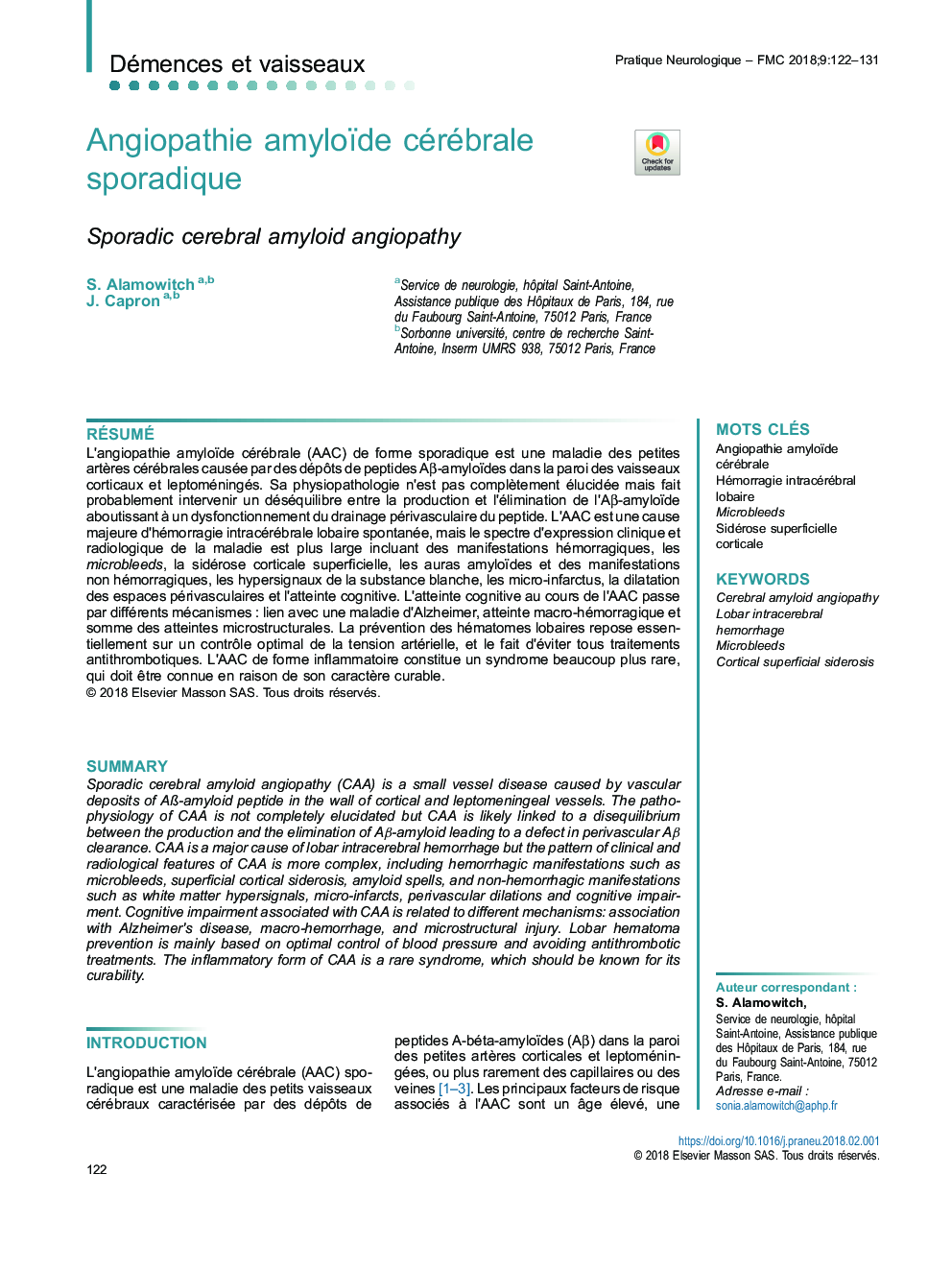| Article ID | Journal | Published Year | Pages | File Type |
|---|---|---|---|---|
| 8690611 | Pratique Neurologique - FMC | 2018 | 10 Pages |
Abstract
Sporadic cerebral amyloid angiopathy (CAA) is a small vessel disease caused by vascular deposits of AÃ-amyloid peptide in the wall of cortical and leptomeningeal vessels. The pathophysiology of CAA is not completely elucidated but CAA is likely linked to a disequilibrium between the production and the elimination of Aβ-amyloid leading to a defect in perivascular Aβ clearance. CAA is a major cause of lobar intracerebral hemorrhage but the pattern of clinical and radiological features of CAA is more complex, including hemorrhagic manifestations such as microbleeds, superficial cortical siderosis, amyloid spells, and non-hemorrhagic manifestations such as white matter hypersignals, micro-infarcts, perivascular dilations and cognitive impairment. Cognitive impairment associated with CAA is related to different mechanisms: association with Alzheimer's disease, macro-hemorrhage, and microstructural injury. Lobar hematoma prevention is mainly based on optimal control of blood pressure and avoiding antithrombotic treatments. The inflammatory form of CAA is a rare syndrome, which should be known for its curability.
Related Topics
Life Sciences
Neuroscience
Neurology
Authors
S. Alamowitch, J. Capron,
